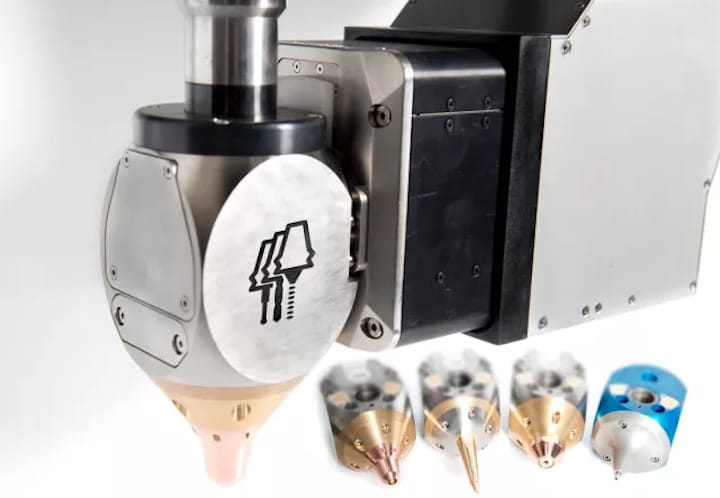
Between the worlds of CNC machining and additive manufacturing (AM), there lies a bridge technology referred to as hybrid manufacturing.
Hybrid systems combine both production techniques to join the benefits of subtractive and additive processes—the precision of the former with the freedom of the latter.
One of the first companies to get hybrid manufacturing into the market is Hybrid Manufacturing Technologies, which develops specialty tool heads that make it possible to transform any CNC machine into a hybrid AM system. Now, over half of the hybrid machine tool models available feature tool heads from Hybrid Manufacturing Technologies.
As promising as hybrid manufacturing is for changing the way objects are made, the state of the technology makes it ideal for a specific niche in the market. To learn more, ENGINEERING.com spoke to Jason Jones, CEO and co-founder of Hybrid Manufacturing Technologies.
The Birth of Hybrid 3D Printing
Jones explained that, about a decade ago, when he was a senior research fellow at De Montfort University, his lab purchased a 3D printer, which absorbed the lab’s budget across multiple years.
“When it was delivered we were very pleased with new and critical deposition technology, but what we realized is that roughly 75% of the price we had paid was for a 3-axis motion platform,” Jones said.“We looked around our lab and thought that although this motion platform was very nice, we already have eight or 10 motion platforms. Wouldn’t it be nice if we could buy only the deposition head and put it inside a CNC machine?”
It was then that Jones and his lab pursued a competitive grant that resulted in the launch of the four-year research project named RECLAIM (REmanufacture of high value products using a Combined LAser cladding, Inspection and Machining system). Along with eight other companies—including Airfoil Technologies International, Cummins, Delcam, Electrox, the Manufacturing Technology Centre, The Welding Institute, Precision Engineering Technologies and Renishaw, De Montfort University and Jones’ lab were able to pursue this new technology.
“What we really wanted to do was to create a fully automated solution for additive and remanufacturing,” Jones said. “We went around and picked software from Delcam and metrology from Renishaw, The Welding Institute and other local partners in the United Kingdom.”
The result was a tool-changeable deposition system that Hybrid Manufacturing Technologies dubbed AMBIT, launched at EMO 2013. When the company began marketing the technology, it found that end users were the first to bite, but, eventually, machine tool manufacturers also took to the idea of incorporating the company’s technology into existing systems. Now, you can find Hybrid Manufacturing Technologies in a number of machines from large manufacturers like Mazak.
Read more at ENGINEERING.com

